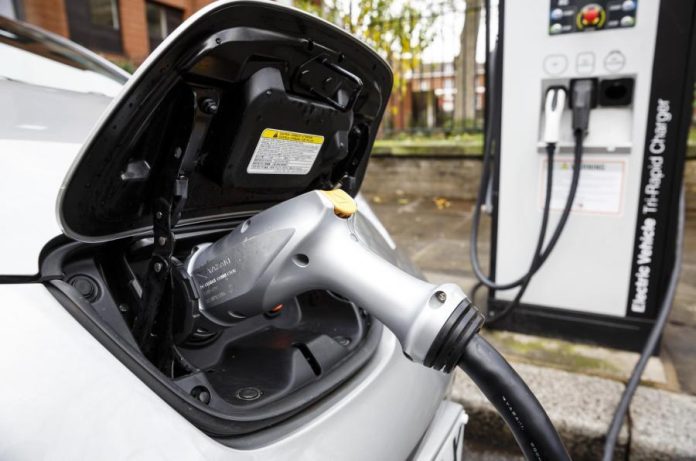Norway is nearing the elimination of diesel and petrol car sales without implementing a ban. I’m interested in how they’ve achieved such a high adoption rate of electric vehicles. What incentives have they offered, and how do their policies compare to those of other countries?.
Norway is making headlines for its remarkable success in transitioning to electric vehicles (EVs) as it nears the elimination of diesel and petrol car sales. What’s fascinating is that the country has achieved this impressive shift without implementing a formal ban on internal combustion engine (ICE) vehicles. Instead, a combination of strategic incentives, government policies, and environmental consciousness has paved the way for EV adoption. In this article, we’ll explore how Norway managed to achieve such high adoption rates, the incentives it has provided to consumers and businesses, and how these efforts compare to policies in other countries.
Table of Contents
Toggle1. The Key to Norway’s EV Success: Strategic Incentives
Generous Tax Breaks and Subsidies
One of the most significant drivers of EV adoption in Norway is the country’s generous financial incentives. The Norwegian government has eliminated the value-added tax (VAT) on electric cars, which is a considerable saving for consumers. This makes EVs more affordable compared to traditional gasoline or diesel-powered vehicles. For example, while an electric car may cost the same or slightly more upfront than a conventional vehicle, the savings on VAT can make a significant difference in the overall price.
Exemption from Road Tolls and Fees
Norwegian drivers of electric vehicles enjoy exemption from road tolls, a major incentive in a country where tolls and fees can add up quickly. Additionally, EV owners benefit from free parking in many areas, access to bus lanes, and low ferry fares. These incentives not only make owning an electric car more affordable but also provide a level of convenience that further encourages adoption.
Support for Charging Infrastructure
Norway has invested heavily in building a comprehensive EV charging infrastructure, ensuring that drivers have easy access to charging stations wherever they go. The widespread availability of fast-charging stations, particularly in urban areas and along highways, has made owning and operating an electric vehicle a practical choice for many Norwegians. The government also offers subsidies for the installation of home chargers, further removing barriers to EV ownership.
2. Norway’s Policies: Aligning with Environmental Goals
Aggressive Emission Reduction Targets
Norway has set ambitious environmental goals and is a leader in Europe when it comes to cutting carbon emissions. The government has committed to reducing its greenhouse gas emissions by 50-55% by 2030 and has set a target for zero-emission vehicle sales by 2025. These bold targets have helped shape policies that prioritize EV adoption as a key strategy for reducing carbon emissions.
Regulatory Support for Electric Cars
Norwegian lawmakers have created a favorable regulatory environment for electric vehicles, including restrictions on the sale of new diesel and petrol vehicles in the future. Although no formal ban is in place, the government has made it clear that the country will phase out fossil fuel-powered cars in favor of cleaner alternatives. As of now, nearly 60% of all new car sales in Norway are electric, a remarkable figure that positions the country as a global leader in EV adoption.
3. How Does Norway Compare to Other Countries?
Incentives Around the World
While Norway’s success in adopting electric vehicles is unparalleled, other countries are following suit with their own incentives. For example, Germany and the United Kingdom have introduced tax breaks and rebates for EV buyers, but they are not as extensive as those in Norway. Germany offers grants for new EV buyers and has invested in a network of charging stations, while the U.K. has pledged to ban the sale of new petrol and diesel vehicles by 2030.
In contrast, countries like the U.S. have made slower progress. While California has set ambitious goals to promote electric vehicles, other states have not yet adopted strong policies to support EVs. Additionally, federal incentives for EVs in the U.S. are less generous than those in Norway, although they are improving under the Biden administration with tax credits for EV buyers.
Government Policies and Regulations
When it comes to policies, Norway stands out due to its proactive stance. Other countries like France and the Netherlands have similar policies, including tax exemptions for electric vehicles, but none of them offer the same combination of toll exemptions, parking benefits, and subsidies seen in Norway.
Furthermore, the Norwegian government’s commitment to sustainability has played a crucial role in the adoption of electric vehicles. Countries like Sweden and Denmark also have strong green policies, but their EV adoption rates are still lower than Norway’s, highlighting the effectiveness of comprehensive and long-term strategies like those in place in Norway.
4. Norway’s EV Market: A Global Benchmark
Leading the Way in EV Adoption
Norway’s success serves as a model for other nations aiming to boost electric vehicle adoption. The country is currently the global leader in EV market share, with over 54% of all cars on the road being electric. This success has prompted several other countries to examine and adopt similar measures, recognizing that government incentives, infrastructure development, and environmental goals are key to accelerating EV adoption.
Lessons for the Future
Norway’s experience demonstrates that policy alignment, incentive programs, and strong consumer demand can create a perfect storm for EV adoption. By making electric vehicles more financially attractive and easier to maintain, the government has been able to encourage a significant shift away from traditional gasoline and diesel cars, all while maintaining a stable and thriving economy.
5. What’s Next for Norway’s EV Future?
Focus on Renewable Energy
Norway’s move toward electric vehicles is closely tied to its broader efforts to transition to renewable energy. The country already generates almost 100% of its electricity from hydroelectric power, making it one of the most environmentally friendly nations in terms of energy consumption. As more electric vehicles hit the road, this will further reduce emissions, ensuring that Norway remains a global leader in sustainability.
The Role of International Collaboration
As Norway leads the charge, international collaboration will be essential in pushing for global EV adoption. Norway has already worked with other countries and manufacturers to share best practices, build charging networks, and standardize regulations, ensuring that the transition to electric vehicles is smooth and achievable on a global scale.
A Blueprint for a Greener Future
Norway’s remarkable achievement of nearing the elimination of diesel and petrol car sales—without an outright ban—shows how smart policy choices, strong financial incentives, and environmental responsibility can work in tandem to achieve rapid and sustainable changes in the automotive industry. By offering incentives like tax breaks, free parking, and toll exemptions, Norway has managed to make electric vehicles not only a desirable option but also a practical one for its citizens. As the world moves toward a cleaner, greener future, Norway’s policies offer valuable lessons on how to successfully transition to a sustainable, electric-powered economy.








